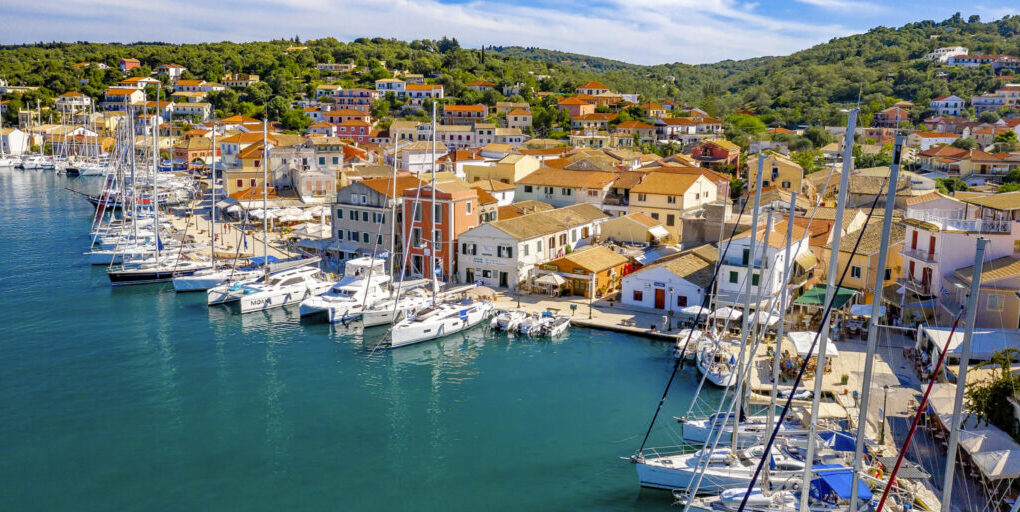There are few experiences more enriching than traveling through the Mediterranean, where each port whispers stories of bygone empires, cultural revolutions, and artistic brilliance. For travelers with an appreciation for art and architecture, a journey along this fabled sea is not just a vacation—it’s a passage through history’s most visually captivating chapters.
From the golden domes of Venice to the whitewashed walls of Santorini, the Mediterranean coastlines are dotted with cities and islands that have long been centers of creativity. Each destination has played a unique role in shaping Western civilization’s aesthetic and architectural legacy. Whether you’re a seasoned art lover or a curious traveler, sailing through these waters offers a window into a stunning mosaic of styles, movements, and masterpieces.
Start in Barcelona, where the genius of Antoni Gaudí takes center stage. The Sagrada Família, still under construction after more than a century, rises like a modern cathedral of dreams with its swirling spires and intricate facades. The colorful mosaics of Park Güell and the organic forms of Casa Batlló invite visitors to see architecture not as static structures but as living, breathing art. In Barcelona, the boundaries between the canvas and the city blur.
As the journey continues eastward, Rome awaits with its unparalleled treasure trove of antiquities and Renaissance glory. The eternal city is essentially a walkable museum, where the Colosseum stands as a powerful reminder of ancient engineering, and the Pantheon astounds with its harmonious proportions and oculus-lit interior. Art lovers will find the Vatican Museums especially compelling—not just for the Sistine Chapel, where Michelangelo’s frescoes demand quiet contemplation, but for the galleries housing classical sculptures and Renaissance masterpieces.
A Mediterranean cruise often includes a stop in Florence, the cradle of the Renaissance. This is where art as we know it today was born, where perspective was rediscovered, and where artists like Botticelli, Michelangelo, and Leonardo da Vinci forever changed the course of visual expression. The Uffizi Gallery offers an overwhelming array of iconic works, including Botticelli’s The Birth of Venus and Caravaggio’s dramatic Medusa. Meanwhile, Florence’s Duomo, designed by Filippo Brunelleschi, remains a feat of architectural ingenuity and a symbol of the city’s artistic ambitions.
Further along the coast, Dubrovnik presents a different kind of splendor. Known as the “Pearl of the Adriatic,” its massive stone walls and medieval Old Town transport visitors to a time when art and architecture served defensive as well as decorative purposes. The blend of Gothic, Renaissance, and Baroque styles reflects the city’s complex history, and a walk along the city walls offers panoramic views of terra-cotta rooftops framed by the azure sea.
Crossing over to the Greek Isles, one finds themselves in the cradle of Western civilization. Athens, in particular, provides an architectural education like no other. The Parthenon atop the Acropolis remains one of the most influential structures in Western architecture, embodying ideals of proportion, balance, and harmony that continue to inspire to this day. Meanwhile, the Acropolis Museum and the National Archaeological Museum bring ancient Greek art into clearer focus, connecting mythology with material culture.
Farther south, Santorini delivers a different palette: stark white structures carved into volcanic cliffs, accented with cobalt blue domes and doors. While the island’s architecture is more vernacular than monumental, it carries an aesthetic purity that has inspired countless artists and designers. The dramatic light and color contrasts make Santorini a living canvas, where every alleyway and sunset contributes to the artistic experience.
One cannot explore the Mediterranean’s artistic richness without a visit to Istanbul, where East meets West. Formerly known as Byzantium and then Constantinople, this city bridges continents and styles. The Hagia Sophia, once a church, then a mosque, and now a museum, encapsulates over a millennium of architectural evolution. Its vast dome, supported by seemingly weightless arches, still confounds engineers. Nearby, the Blue Mosque and Topkapi Palace continue the narrative with their intricate tilework, calligraphy, and Ottoman grandeur.
Each destination along the Mediterranean offers a new chapter in the history of art and architecture, and perhaps the most seamless way to tie them together is through a thoughtfully curated cruise. While luxury and leisure are often the primary lures, Mediterranean cruises also provide a rare logistical advantage for art and architecture enthusiasts: the ability to access numerous UNESCO World Heritage Sites, renowned museums, and architectural landmarks within a relatively short time frame and without the hassle of multiple flights or train rides.
This floating approach to cultural immersion allows for both depth and breadth. One can marvel at the frescoes of Pompeii in the morning and sip wine under a Grecian sunset in the evening. The rhythm of life aboard ship contrasts beautifully with the sensory richness of each port—offering a space for reflection between visits to museums, cathedrals, and ancient ruins.
Indeed, sailing the Mediterranean isn’t merely a mode of transport; it’s a continuation of a historical tradition. Since antiquity, these waters have carried artists, philosophers, merchants, and kings. Today’s travelers follow in their wake, propelled not by empire or commerce, but by curiosity and appreciation for the enduring legacy of human creativity.
As the sun sets over the terracotta rooftops of some cliffside village and the ship gently sways under a starry sky, it’s easy to feel connected to the past. Art and architecture are more than subjects to be studied—they are experiences to be lived. And there is perhaps no greater classroom, no more inspiring gallery, than the Mediterranean itself.




